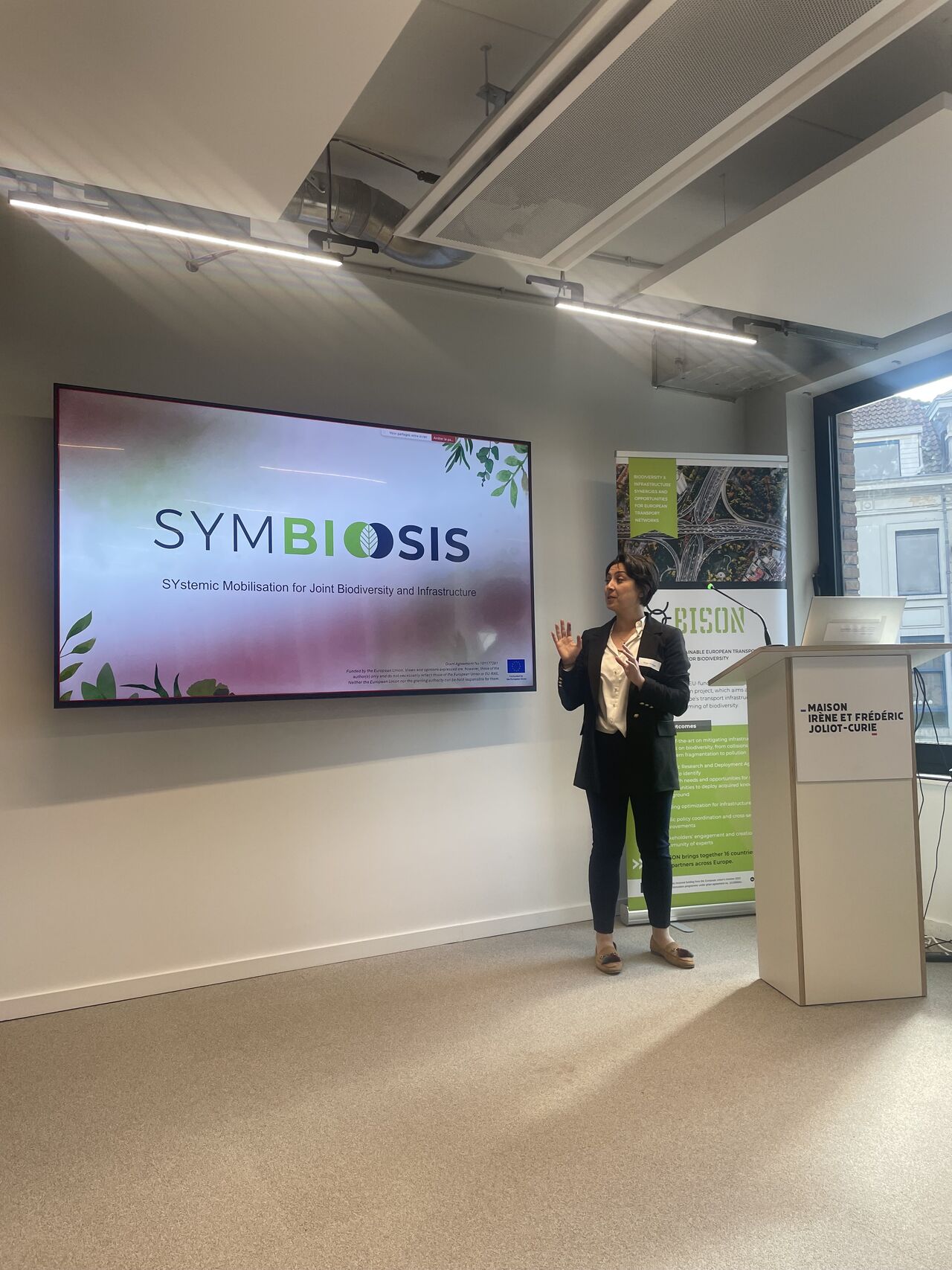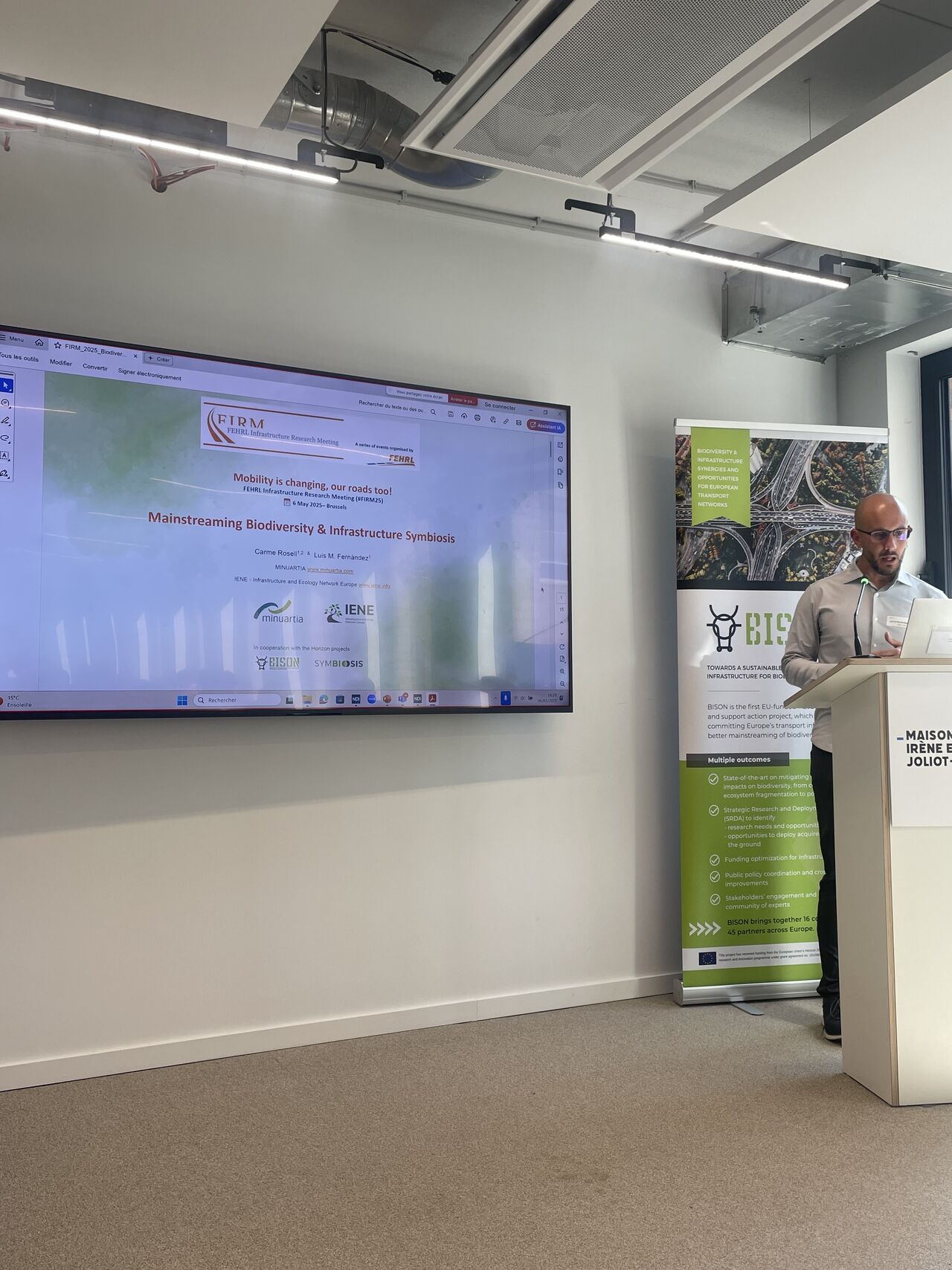On 6 May 2025, the SYMBIOSIS project was featured by Pinar Yilmazer, Head of the Sustainability Programme at UIC and Coordinator of SYMBIOSIS at the FIRM25 Conference in Brussels during the session “Mainstreaming Biodiversity & Infrastructure Symbiosis”, organised by FEHRL.
As Pinar Yilmazer stated in her address, “It’s essential to understand why we are working on the intersection of infrastructure and biodiversity.” Transport and energy networks, often developed as linear infrastructure, stretch across Europe, and increasingly threaten biodiversity by fragmenting habitats, increasing wildlife mortality, contributing to pollution, and reducing ecological connectivity.
The SYMBIOSIS project (Systemic Mobilisation for Joint Biodiversity and Infrastructure Strategies) responds to these growing challenges by proposing an integrated approach to sustainable infrastructure development—where biodiversity is not an afterthought but a fundamental consideration.
Backed by 22 partners from 15 countries, SYMBIOSIS brings together a wide spectrum of stakeholders: rail, road and energy operators, research centres, consultancies, NGOs, and leading universities with expertise in biodiversity and linear infrastructure. The project focuses on three core objectives :
- Integrating biodiversity into infrastructure planning and governance, improving policies, Environmental Impact Assessments, sustainability reporting, and procurement processes.
- Developing practical tools to manage land alongside infrastructure in ways that support both ecosystems and resilient transport systems.
- Creating a shared knowledge base, facilitating collaboration across sectors to ensure stakeholders—from engineers to ecologists—can work with consistent, high-quality data and guidance.
Luis M. Fernández, also part of the SYMBIOSIS team, reinforced these messages with insights from transport ecology. Highlighting the 73% average decline in vertebrate populations (WWF, 2024), he pointed to nature-based solutions that enhance resilience, safety, and ecological restoration. Luis referenced the IENE Biodiversity and Infrastructure Handbook, a key resource bridging research and practice, which offers practical guidance on ecological effects, planning, mitigation, monitoring, and maintenance of ecological assets in infrastructure projects.
Both speakers emphasised the need for cooperation, standardised tools, and long-term strategies to align infrastructure with environmental goals. SYMBIOSIS is actively addressing these needs with practical tools for biodiversity assessment, resilience mapping, and carbon impact analysis.
🔗 For more details and access to session materials:
👉 FIRM25
👉 symbiosis-transport.eu
👉 IENE Biodiversity & Infrastructure Handbook


